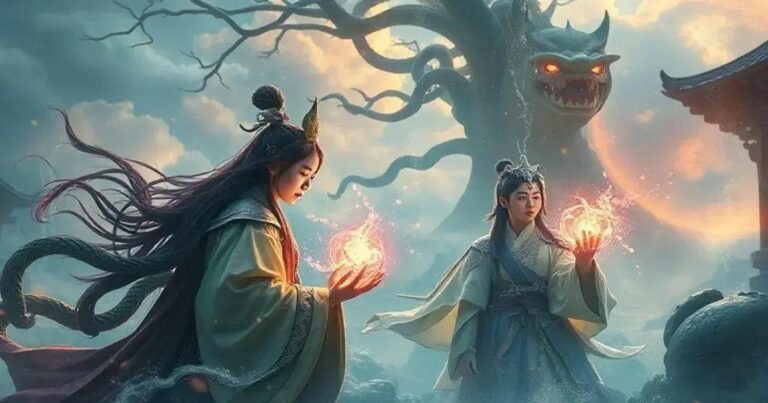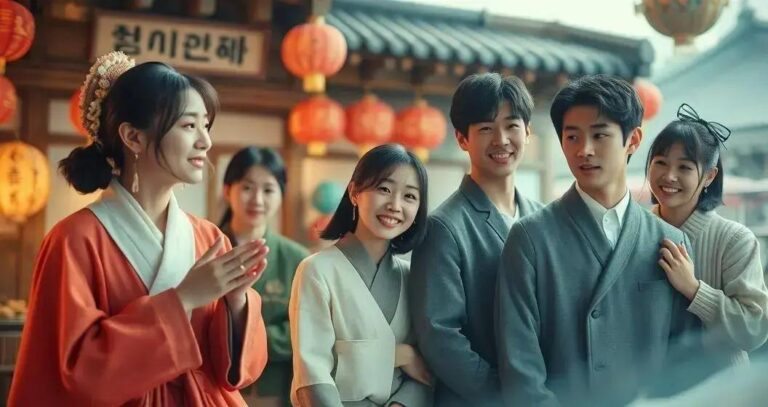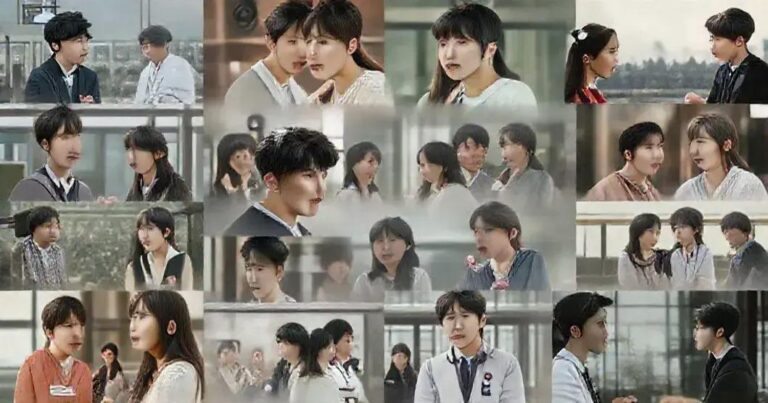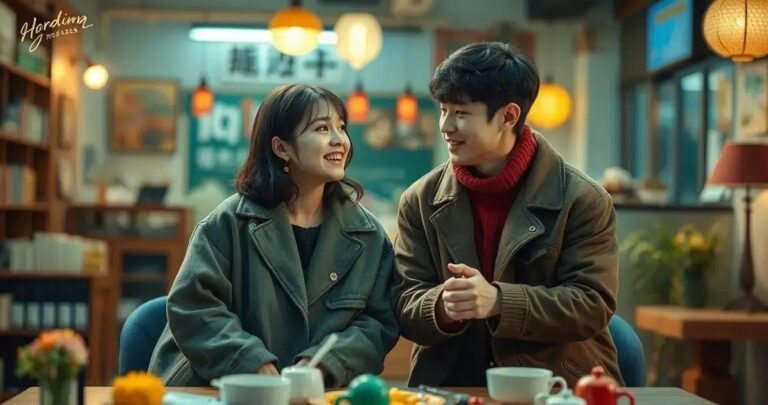Korean Drama Fan Theories: Exploring the Most Popular and Intriguing Ideas
Anúncios
Korean drama fan theories have captivated audiences with their unexpected plot twists and intriguing character motivations. These theories dive deep into the hidden layers of storytelling, unraveling meanings that even the most ardent viewers might overlook. Explore popular ideas about alternate endings and symbolic elements, as well as the cultural references that enrich these stories and fuel the imagination of dedicated fans.
Unraveling Hidden Meanings in Plot Twists
In the realm of Korean dramas, plot twists are a staple that keeps viewers on the edge of their seats. An essential part of the storytelling magic involves hidden meanings behind these twists, which often contribute to rich fan theories. By analyzing these hidden elements, fans gain a deeper appreciation and understanding of the series.
Exploring Double Meanings
Many Korean dramas imbue their plot twists with dual meanings that aren’t immediately obvious. This creates layers within the storyline where viewers can discover symbolism or foreshadowing that adds depth to the plot upon rewatching. These elements enhance the storytelling, providing an unexpected narrative richness.
Implications of Cultural Nuances
Understanding cultural contexts is crucial, as some plot twists rely heavily on societal norms and historical references specific to Korea. These cultural nuances can change the way a scene is perceived, turning a seemingly straightforward twist into a profound commentary on society or history.
One prominent example can be found in series where familial hierarchies or business rivalries are key themes. Viewers who grasp these cultural specifics often recognize plot twists earlier, forming complex theories and enriching their viewing experience.
Subtle Character Development
Hidden details in a character’s background or behavior can be a harbinger of major plot twists. These clues are intentionally placed by the writers to suggest a change in storyline or character direction. Fans specializing in character analysis eagerly dissect these subtle hints, tying them into grander theories.
Ultimately, unraveling hidden meanings in Korean dramas calls for attentive viewing and a passion for detail. These twists not only elevate the narrative but invite audiences to join in an intellectual exploration beyond the screen.
Character Motivations That Have Fans Buzzing

Character motivations in Korean dramas often serve as the backbone that drives the story forward. These motivations, whether stemming from love, revenge, ambition, or redemption, are complex and make for intense viewing experiences that fans can’t stop talking about.
Understanding Deep Emotions
Characters frequently possess rich emotional backgrounds that contribute to their multilayered motivations. Fans delve into these emotional depths, trying to understand how a traumatic past or unfulfilled desire fuels a character’s decisions. This exploration makes narratives more compelling.
Family and Social Pressures
Many Korean drama characters face extreme family and social pressures, such as obligations to uphold family honor or societal expectations. These external factors often conflict with personal desires, leading to internal struggles that resonate with viewers and provide fertile ground for fan theories.
In series centered around chaebol families or political dynasties, understanding these pressures becomes key to unraveling a character’s intricate motivations and actions. Fans engage with these layers to predict future plot developments.
Unexpected Twists and Motivations
Sometimes a character’s motivation is driven by unexpected revelations, such as hidden identities or long-lost family members. These surprises shift character trajectories dramatically, inspiring a flurry of discussions and analysis among fans trying to piece together how these twists align with previously known motivations.
The combination of layered character backstories, external pressures, and sudden plot revelations creates discussions that keep the fan community buzzing. Each character choice becomes a piece of a larger puzzle that drama enthusiasts eagerly work to solve.
Theories About Alternate Endings
Theories about alternate endings in Korean dramas serve as a playground for the imagination of fans. When a series concludes, the possibilities of what could have happened keep the discussions alive long after the final episode has aired.
Fan-Crafted Endings
Many fans create their own alternate endings, either rewriting the story to fit their preferences or exploring “what-if” scenarios where different choices change the outcome. These fan-crafted endings often reflect unfulfilled desires to see characters achieve happiness or redemption.
Hidden Clues in Final Episodes
Die-hard fans examine final episodes meticulously, searching for hidden clues, unresolved plot lines, or symbols that suggest different potential endings. It’s common for viewers to latch onto these details, theorizing that the creators left hints about alternate events intentionally.
Some theories propose that the real ending might be different from what was shown, suggesting that DVD specials or creator interviews will one day reveal undisclosed content. This encourages fans to keep analyzing scenes and dialog for missed hints.
Cultural Influence on Ending Theories
Cultural elements often shape how alternate endings are perceived by audiences. Certain resolutions may appear more satisfying when understanding societal norms or traditional story arcs prevalent in Korean culture. Fans often discuss how cultural accuracy or deviation influences character decisions and the overall storyline.
The allure of alternate endings enriches the fan experience by creating dialogue around the possibilities of storytelling that go beyond what was presented on screen. These discussions enhance engagement and foster a sense of community among fans.
Symbolism and Its Impact on Stories
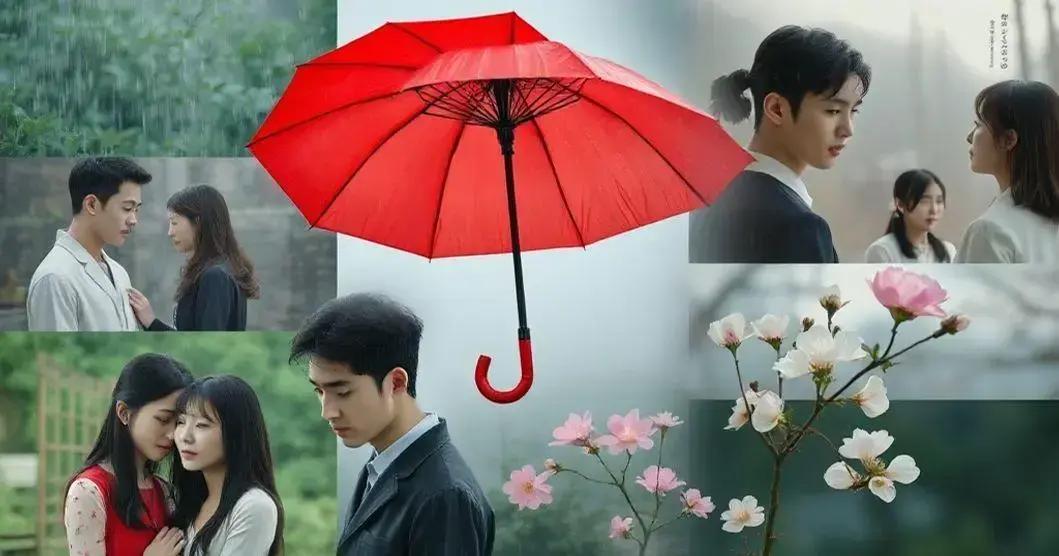
Symbolism in Korean dramas plays a pivotal role in enriching the storylines and deepening character relationships. These symbols often represent broader themes, providing viewers with a layered narrative experience that invites analysis and discussion.
Symbolic Objects and Their Meanings
Items such as a broken watch, a red umbrella, or a family heirloom are more than mere props. These objects often hold significant meanings that reflect a character’s emotional journey or foreshadow future events. Fans love dissecting these symbols, connecting them to central themes or pivotal plot points.
Color Schemes and Visual Metaphors
Color usage is a powerful tool in storytelling, often used to convey emotions or themes. For instance, the color red might symbolize passion or danger, while blue might signify calmness or sadness. Visual metaphors like shadows or reflections offer additional depth, guiding viewers to new interpretations of the story.
Understanding these elements enhances the viewing experience, as subtle shifts in color often prelude a change in tone or hint at a character’s hidden intentions.
Nature and Environmental Symbols
Natural elements like rain, snow, or blooming flowers frequently carry symbolic meanings. A rainfall might cleanse and renew, while snow could signify isolation or purity. These elements, woven into the storyline, enrich the narrative and provide fans with material to craft detailed theories.
The presence of symbolism elevates storytelling by inviting viewers to engage more deeply with the narrative, drawing connections between the visible and the metaphorical. This symbolic richness keeps viewers intrigued, allowing them to find new meanings with each rewatch.
How Cultural References Influence Theories
Cultural references in Korean dramas are essential elements that influence fan theories, often shaping how viewers interpret storylines and character dynamics. These references help to ground stories in a specific context, allowing audiences to connect with traditional and contemporary aspects of Korean culture.
Significance of Historical Context
Many dramas incorporate historical elements that provide depth and authenticity. References to past events, such as the Joseon Dynasty or the Korean War, offer rich backgrounds that affect character motivations and plot developments. These historical layers invite fans to explore theories about character lineage or historical accuracy.
Traditional Customs and Practices
Elements like holidays, traditional ceremonies, and familial obligations enrich narratives by reflecting societal norms that are distinctively Korean. Understanding these customs allows fans to delve into character behaviors, generating theories that consider cultural appropriateness or conflict.
For example, customs like lunar New Year celebrations or ancestral rites highlight familial bonds and duties, impacting character decisions that fans eagerly theorize about.
Modern Korean Society and Trends
Contemporary cultural references, from K-pop to tech innovations, often resonate with global audiences. These modern elements provide a current lens for storytelling, sometimes incorporating societal critiques or urban lifestyles. Fans often hypothesize how these trends will affect plot directions or reflect societal changes.
Understanding cultural references is key to forming comprehensive, informed fan theories. These elements not only enliven stories but also encourage audiences globally to engage with Korean culture, expanding the reach and appreciation of Korean dramas.
Fan Communities and Their Favorite Theories

Fan communities for Korean dramas have become vibrant hubs for sharing theories and discussing the intricate details of storylines. These communities thrive on platforms like forums, social media, and dedicated fan sites, fostering connections among enthusiasts worldwide.
Online Platforms and Discussions
Fans gather on various online platforms to share their favorite theories about ongoing dramas. Websites like Reddit, Twitter, and community blogs host lively debates where viewers dissect episodes, predict future plot twists, and propose alternative character arcs.
These discussions often highlight the fan community’s creativity and keen eye for detail, as fans bring unique perspectives that enrich the overall viewing experience.
Popular Theories in the Fan Base
Certain theories gain popularity within the fan community, becoming almost as legendary as the dramas themselves. These favorite theories often involve hidden relationships, secret identities, or unforeseen alliances. Dedicated viewers tirelessly work to connect dots from various episodes to support these ideas.
Collaborative Idea Exchange
Fan communities are not only places for sharing theories but also forums for collaborative storytelling. Fans often band together to create fan fiction or videos that explore their theories further. This collaborative spirit keeps fan engagement high and contributes to the dynamism of the fan base.
The ongoing exchange of ideas in fan communities demonstrates the passionate investment viewers have in Korean dramas. By bringing their theories to life and sharing them, fans ensure these stories continue to captivate audiences long after an episode airs.
Unraveling the Fascination with Korean Drama Fan Theories
Korean drama fan theories have become a phenomenon, engaging viewers with intricate plot analyses and creative interpretations. The layers of storytelling, enriched by cultural references and symbolism, offer endless possibilities for speculation.
Fan communities play a vital role, harnessing online platforms to discuss, share, and craft beloved theories that keep the excitement alive. These discussions not only deepen the understanding of narratives but also foster connections among fans worldwide.
The exploration of alternate endings and character motivations adds further intrigue, compelling viewers to immerse themselves in the rich tapestry of Korean dramas. The appeal of these dramas is amplified by the collective passion and insight of their fan base.
By diving into these theories, fans enhance their appreciation for this unique storytelling art form, ensuring that Korean dramas continue to leave a lasting mark on global entertainment. The world of fan theories highlights how narratives transcend the screen, captivating audiences with every new discovery and shared idea.


